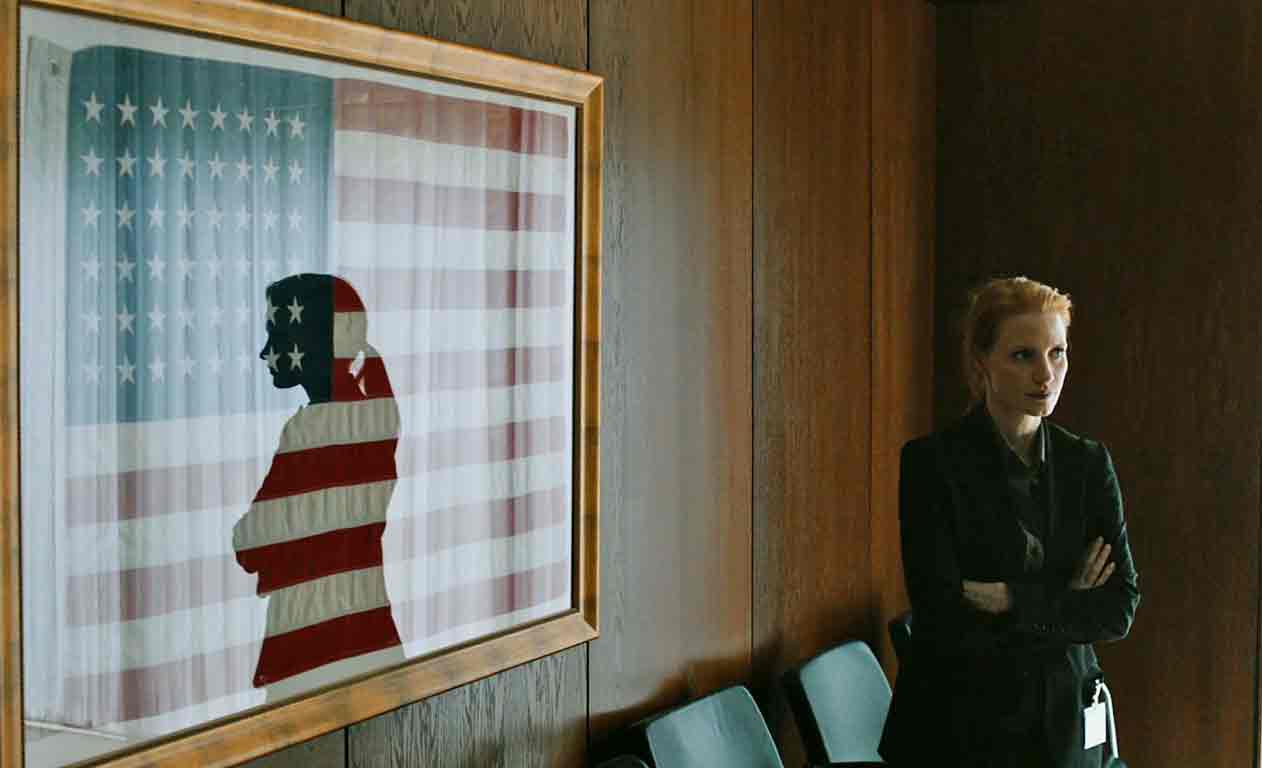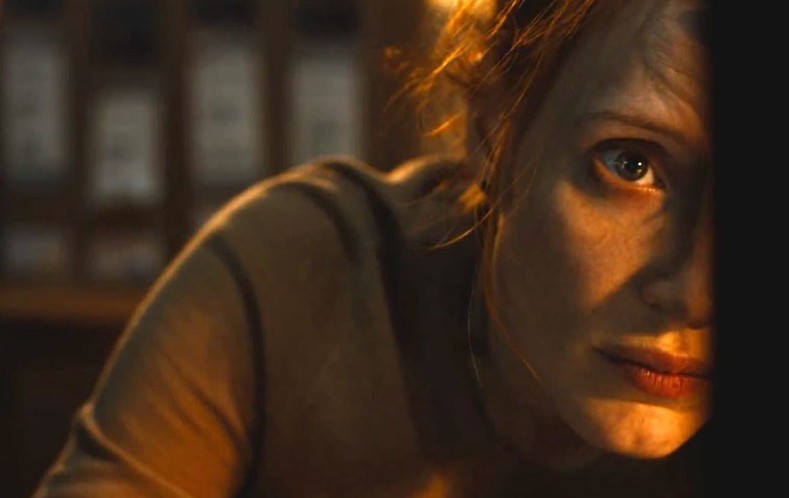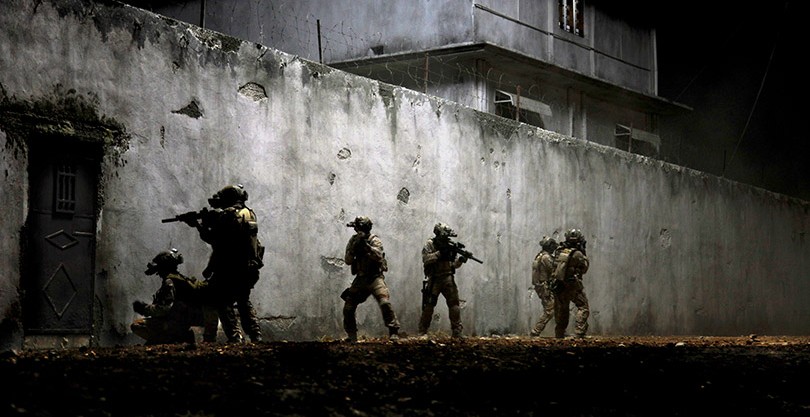|
In his book "What is
Cinema?" film theorist André Bazin stated:
"But realism in art can only be achieved in one way - through artifice.
Every form of aesthetic must necessarily choose between what is worth
preserving and what should be discarded, and what should not even be
considered." Realism in cinema is therefore determined by an
audio-visual
language that differs from real life. Any compression or fragmentations
of events
are a result of the limitations of the time, space and technique of the
screen.
A filmmaker is responsible for selecting these techniques within the
frame of
the narrative.
Looking to cinematise the lead up and execution of
Operation
Neptune Spear, the hunt and assassination of Osama Bin Laden, Kathryn
Bigelow
and journalist turned screenwriter Mark Boal compress facts and
timelines and
omit significant figures from this decade-long search. However, the film moves through a decade long period with
such ease that the realism is never compromised. It sidesteps Hollywood
clichés
and sentimentality as comfortably as few others have done before it.
Boal's script
is clear of tragic back stories, its character development is quietly
stated
and its moral compass, if there is one, lingers under the film's
surface.

The film has been described as
being in the tradition of "New Journalism": a method of journalism
that adds subjectivity rather than an objective perspective to the
facts. It is
an appropriate means of describing the film because even as it
condenses
multiple real world terrorist attacks over the years, from 9/11 to a
bombing in
London, the impact is still extremely shattering to the audience and
its characters.
The attacks grow increasingly personal to the film's lead subject Maya
(Jessica
Chastain at her most intense and emotive), a CIA operative who spends
over a
decade looking for clues on the whereabouts of Bin Laden.
Contributing to the film's
authenticity, Zero Dark Thirty makes
fewer concessions than Bigelow's previous
film The Hurt Locker (2009), which to
avoid any political waves, was purposely coy on its subject of Post
Traumatic
Stress Disorder. This uncompromising nature is immediate from early
scenes
where torture is used to extract information from a prisoner. Both
Democrats
and Republicans alike have been publicly critical of the film, deeming
the use
of enhanced torture techniques to track Bin Laden is inaccurate and
that the
film praises torture an effective means of investigation.

This is a misjudgement and
hypocritical given the extensive amount of research assistance by the
CIA, the
Department of Defense and the White House, who provided extensive
interviews
and documents about the operation. The interrogation scenes are, as
they should
be, ugly and difficult to watch. A man is strung up by his wrists,
punched,
stripped down and shoved into a box. His answers are varied, unclear
and unhelpful.
We see the stress that these moments place on the interrogator (played
by Jason
Clarke). It is difficult work and impractical compared to other
advanced
techniques, like aerial surveillance. An important subtextual
development is
how these techniques are gradually being phased out, which is true
given the
closure of the black list sites and the outlaw of enhanced torture
techniques.
If the film does have a message my
interpretation is that it is, in many ways, a film about how vacant
revenge and
obsession can be. Maya's entrance to the film is through one of these
horrific
interrogations, which she is not mentally prepared to engage. A deep focus shot of the room frames Maya
in the background. The shot shows her isolated from the action, true to
her
inexperience, and her face conveys great discomfort in watching the
interrogation unfold. She arrives in a dark suit, unideal for
waterboarding prisoners,
and when asked to participate she is clumsy in handling the situation.

Yet her inexperience also provides
compelling movement in Boal's screenplay. As the terrorist attacks
mount over
the years and the deaths become more personal, Maya's viridity is
dissolved and
replaced with increasingly determined anger. This change is also
complimented
by through the costumes, as Maya's clothes become more combat-like, and
her
dialogue which grows more sadistic: "I'm going to smoke everyone
involved
in this op and then I'm going to kill Bin Laden". These fascist
undertones,
also echoed by Mark Strong as the head of Counter Terrorism at the CIA,
are
dispelled by how tactful much of the film is, particularly the
meticulous and
intense raid on the compound.
Like The
Hurt Locker, the film isn't politically right or left. Once the
breathless
mission is over and the objective is 'won' the film obtains a brief but
powerful feeling of melancholy. There are no 'hooahs' or flag waving.
Maya's
tears are not ones of joy or relief but unfulfillment. In a single
close-up
shot, her face reflects the hollow aftermath of conquering our enemies,
and I
think, the ambiguity around the next chapter of global terrorism. 'Zero
Dark
Thirty' itself is a military phrase, referring to the early dawn, once
darkness
has passed. What follows from this moment? It is an unexpected and
brave question
to end this long but supremely crafted docudrama.
|